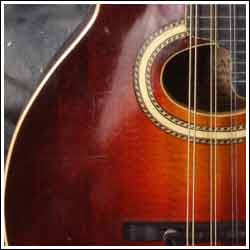
Essentially, the major scale is one of the most important scales in music. For that reason, I’ll be using lots of examples and repetition, because I want to do a thorough job of explaining the concept. As a result, this has turned into a fairly lengthy article.
Learning Scales
This lesson is intended to teach you how to find the major scale in any key.
I used to hate scales. I always felt like I’d rather be playing a tune, or learning something new and musical as opposed to spending time practicing my scales. They always seemed kind of boring and uninteresting.
However, if you learn how to build them, how to change them and how they can be used, you’ll see a purpose. You’ll find that you make use of that knowledge on a regular basis. You may even find it gets interesting!
The Major Scale
The major scale is the most important scale you’ll learn. A little knowledge about it is essential, no matter what instrument you might be learning. And that knowledge, along with a little theory, will open up a lot of musical possibilities, such as:
- how to build chords – how to form a triad, how to turn a major chord into a minor, how to build compound chords (major 7ths, dominant 7ths, 9ths, 13ths, etc.)
- how to find different notes and chords most commonly used in any particular key.
- the use of partial scales, different scale sequences and arpeggios as one of your tools for improvisation.
- how to form double stops, learn harmonization
- how to transpose a tune to a different key.
What Else?
Not only that, but physically practicing scale patterns and sequences on your mandolin (or any instrument) has many advantages as well:
- It can help develop your ear. You’ll learn to recognize the different pitches associated with the individual keys.
- You’ll improve your technique – develop better string attack and improved sound quality and tone from your instrument.
- It can help with relaxation and improve overall control and economy of motion.
- It’ll help develop your hands, correct finger movement, improved coordination and finger strength.
- It’s very good position exercise, and a great way to get better acquainted with your fingerboard.
Learning scales doesn’t have to be an exercise in memorization. Although certain things do have to be committed to memory, you don’t need to memorize every scale.
Scale Patterns
By learning a simple interval pattern you’ll be able to figure out any major scale. From any major scale, you can build minor and pentatonic scales. Many scales are derived from the major scale, or at least explained and learned in terms of how they differ from that pattern.
So… if I’ve managed to talk you into a little scale study, let’s take a look at how to build a major scale.
You will need to know what “whole tones” and “half tones” are. It’s important to know the names of all the notes and understand their order and position in relationship to each other. You should understand which notes are “enharmonic”, and what an octave is. And, you should be able to figure out the interval (distance) between each note in tones and semitones (half tones). If you need help with any of this, go back and read the article “The Absolute Basics of Music Theory”.
So, if you’re good with all that, let’s move on…
Major Scales Rule!
We’ll start with a quick look at a few rules for an ascending major scale:
- The first note of the scale will be the note that the scale is named for. In other words, the first note of the C major scale will be a C, the first note of the G major scale will be a G, etc.. The first note of the scale is called the “tonic”.
- Starting with the tonic, each letter of the musical alphabet must be used once, in alphabetical order. Whether it’s used as a natural, a sharp or a flat, each individual letter can only be used once. This means that if you have a C, you can’t have a C#, or if you have an F#, you can’t also have an F. This will result in seven notes because there are only seven letters in the musical alphabet.
Eg. C – D – E – F – G – A – B - Finally, we’re going to add another note to the end of the scale. This note will be the same as the “tonic” , only an octave higher (Actually, it’s the start of the next octave of that scale). Hence, that eighth note is called the “octave”. When we write the major scale, or play the scale, it’s usually described from tonic to octave.
So, now we have a major scale with 8 notes. It looks like this:
I II III IV V VI VII VIII
C D E F G A B C
What’s with the Roman Numerals up top?
At a later time we’ll look at them a little differently, but at this point, we’re basically just numbering the notes in the scale. The first note in the C major scale is a C, the third note is an E and the fifth is a G.
Actually, in music lingo they’re called degrees. We think of the first, second or third degree of a scale. For instance, in the example above, the seventh degree of the C major scale is a B note. Normally, we’ll leave the word “degree” off, and just say the seventh, or the fifth, etc.
So in the C major scale, the tonic is a C, the fourth is an F, and the fifth is a G.
Make sense?
OK. On the next page, we’ll take a closer look at the intervals in the C major scale, and see if we can figure out a pattern.
